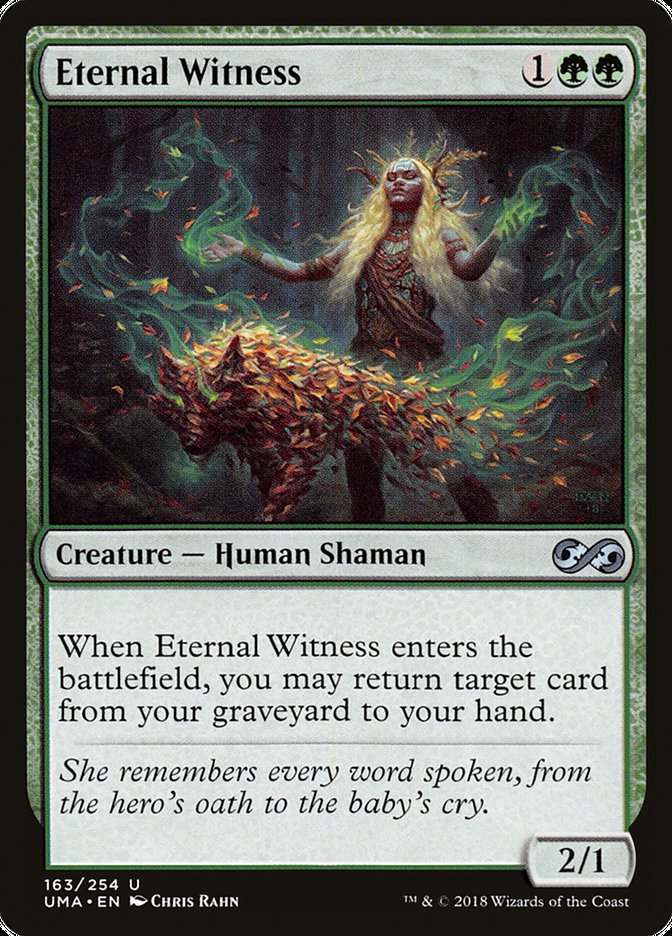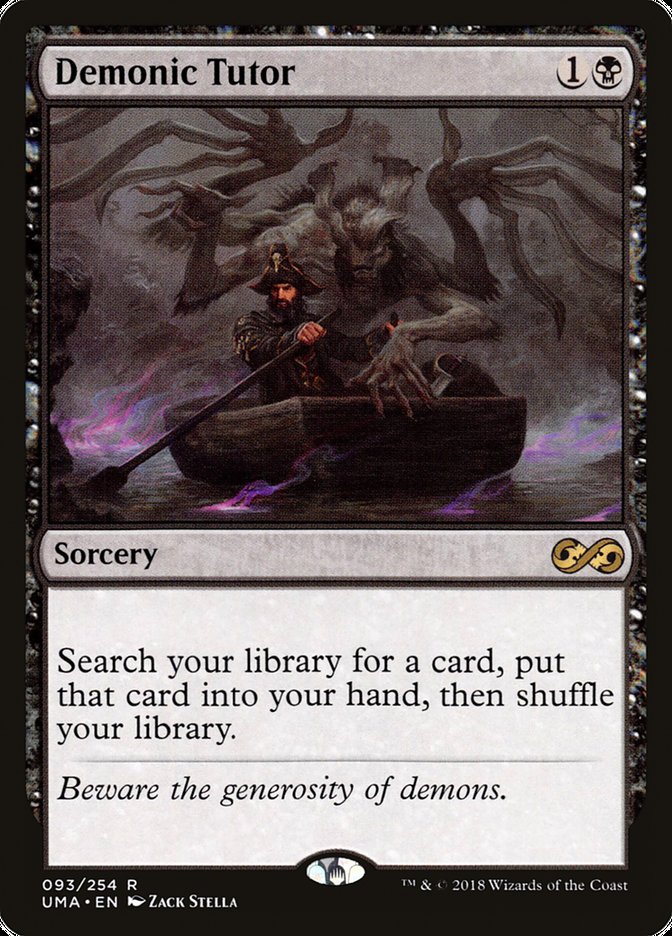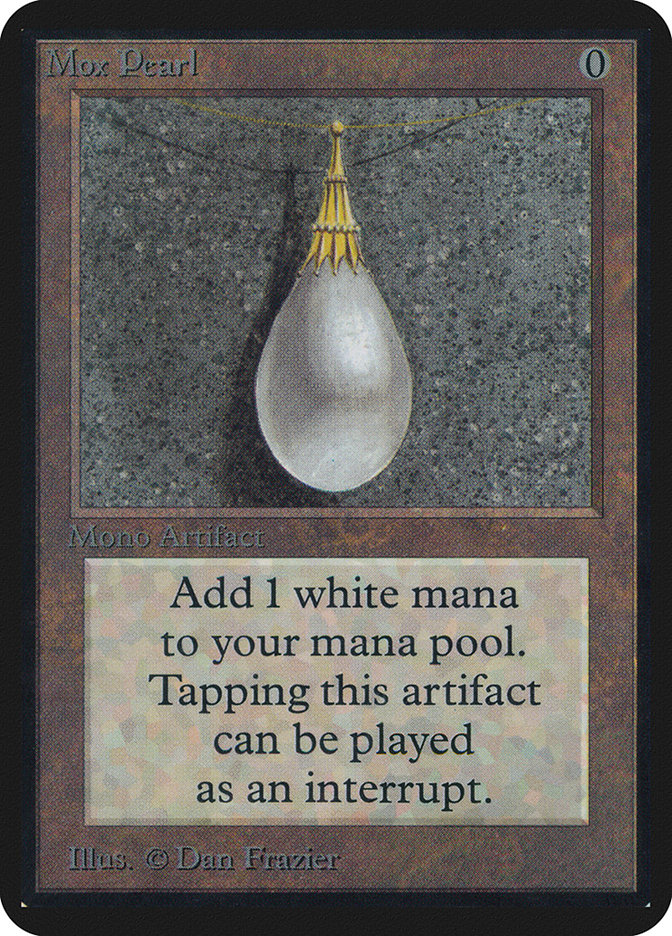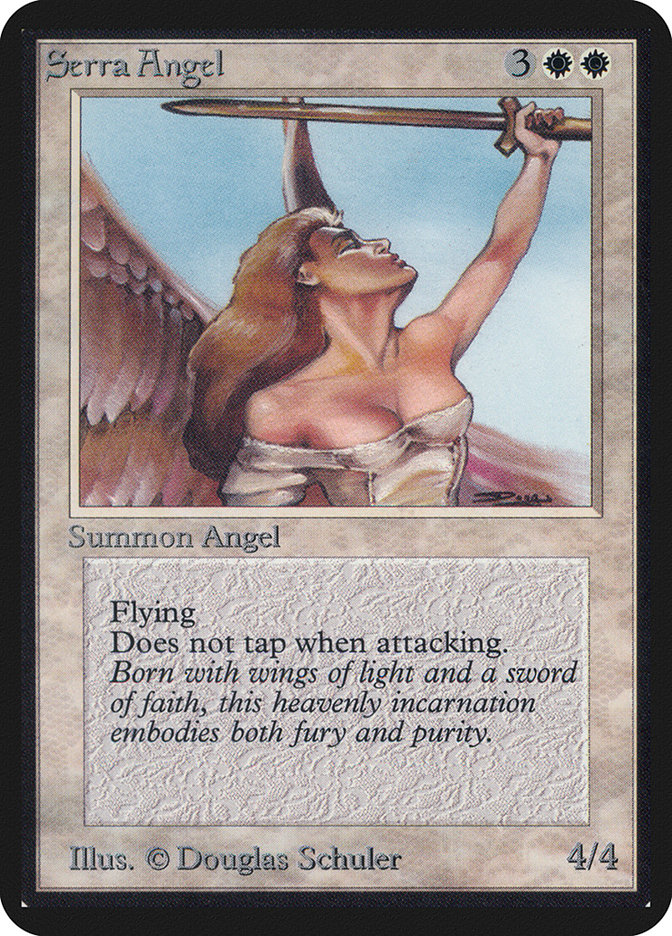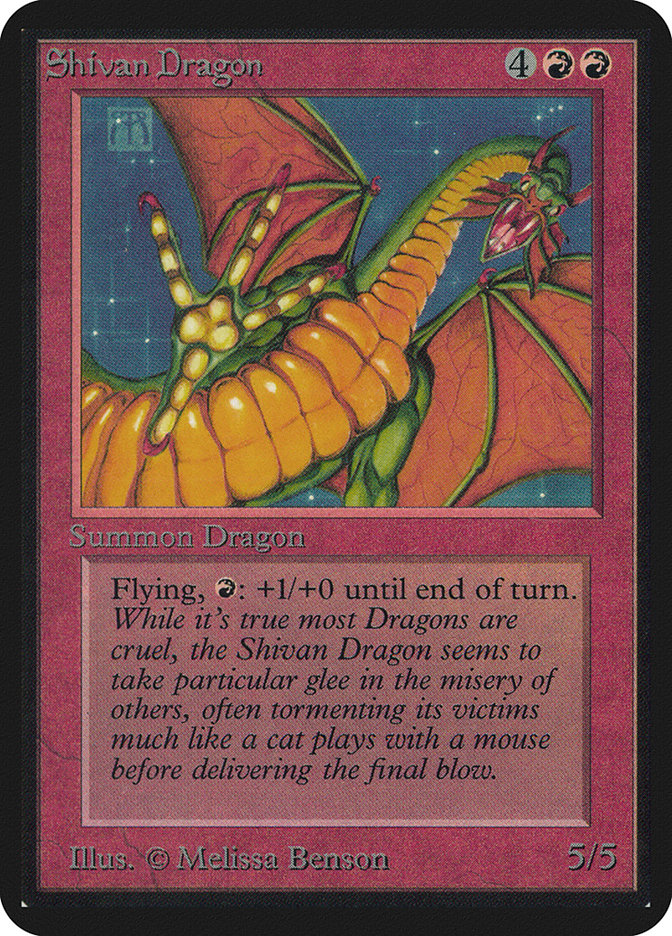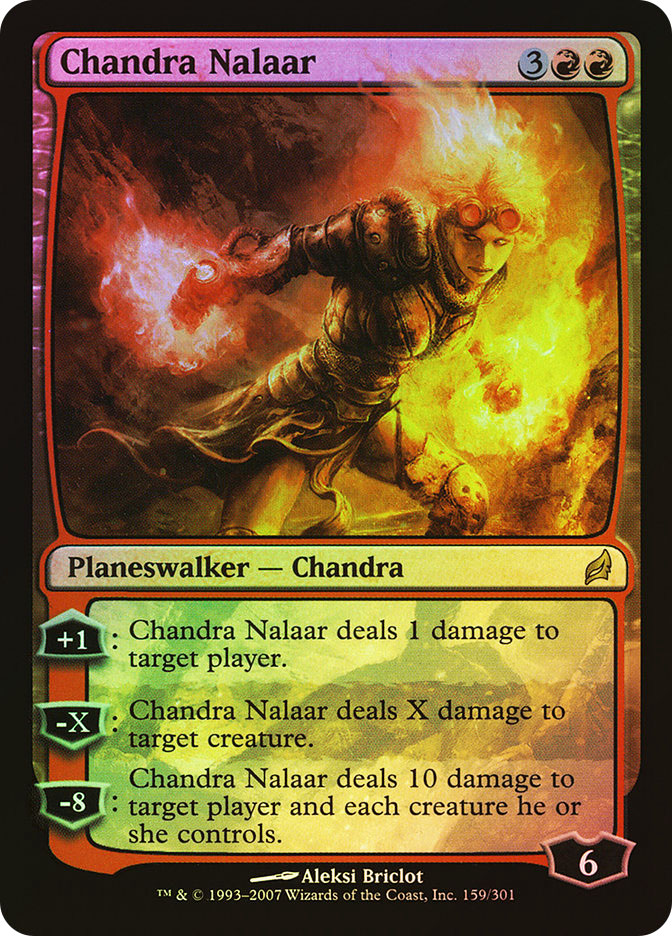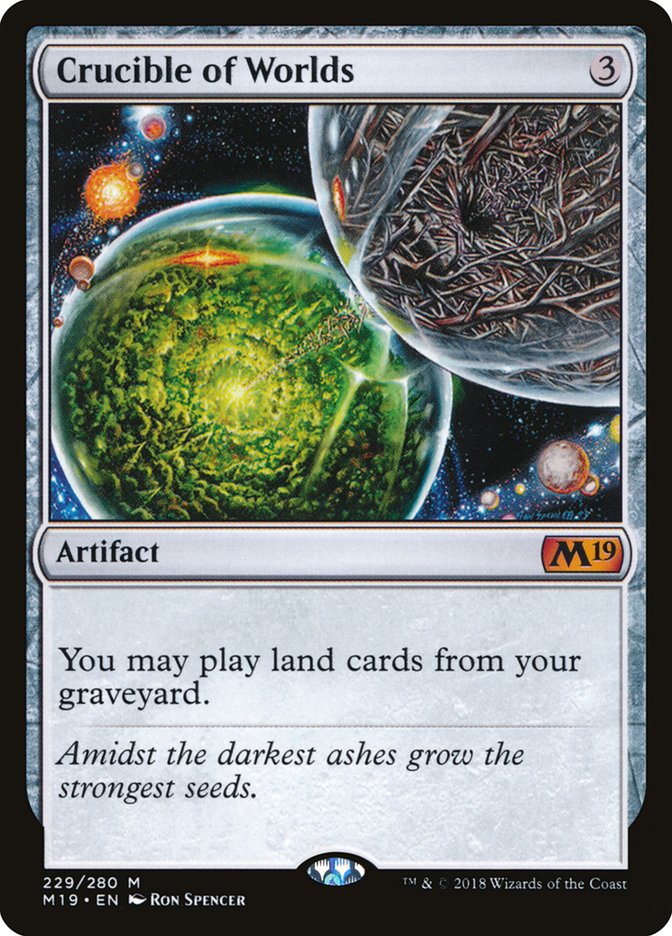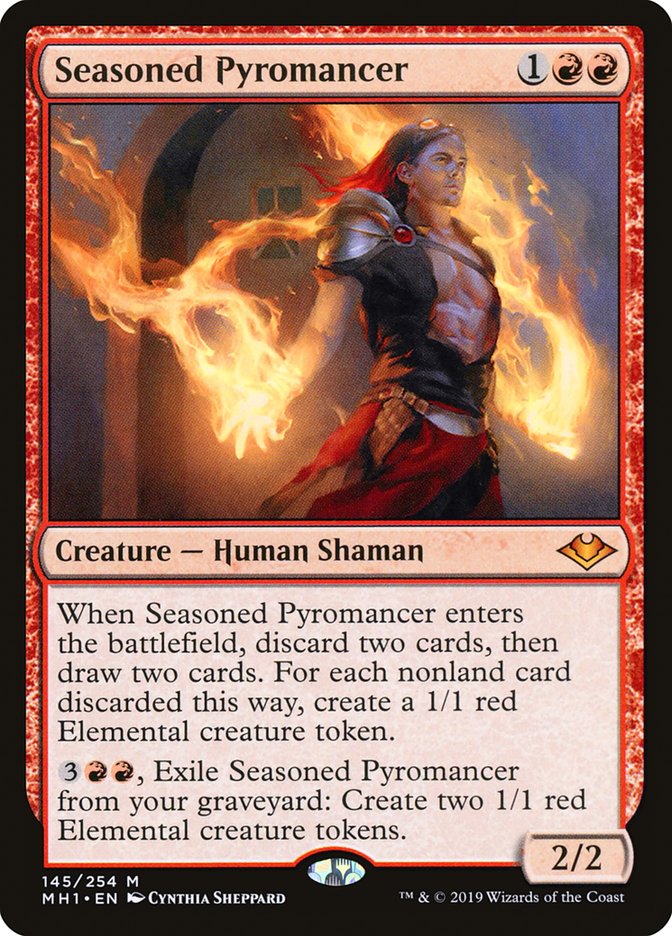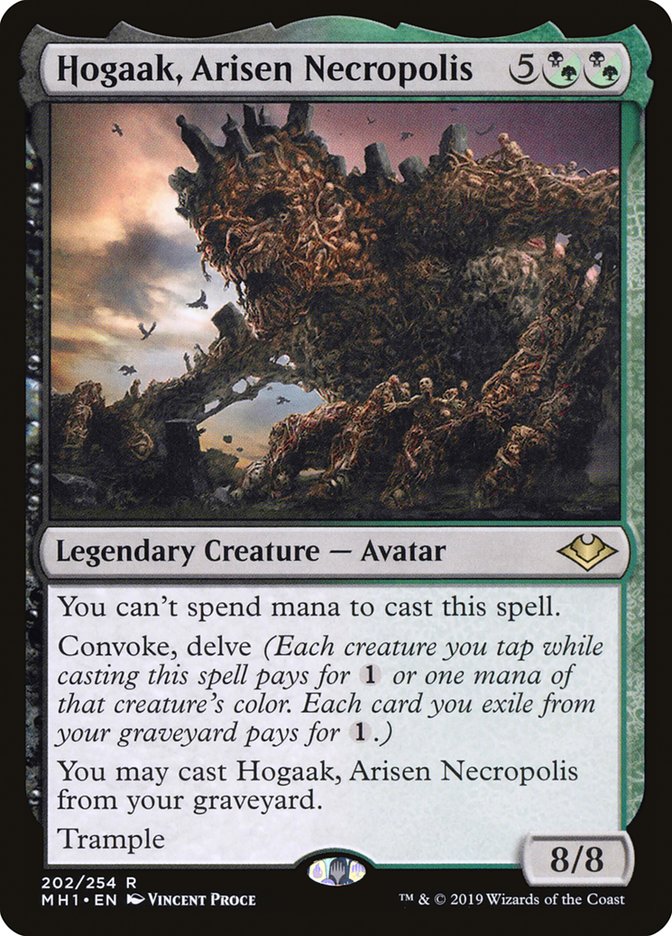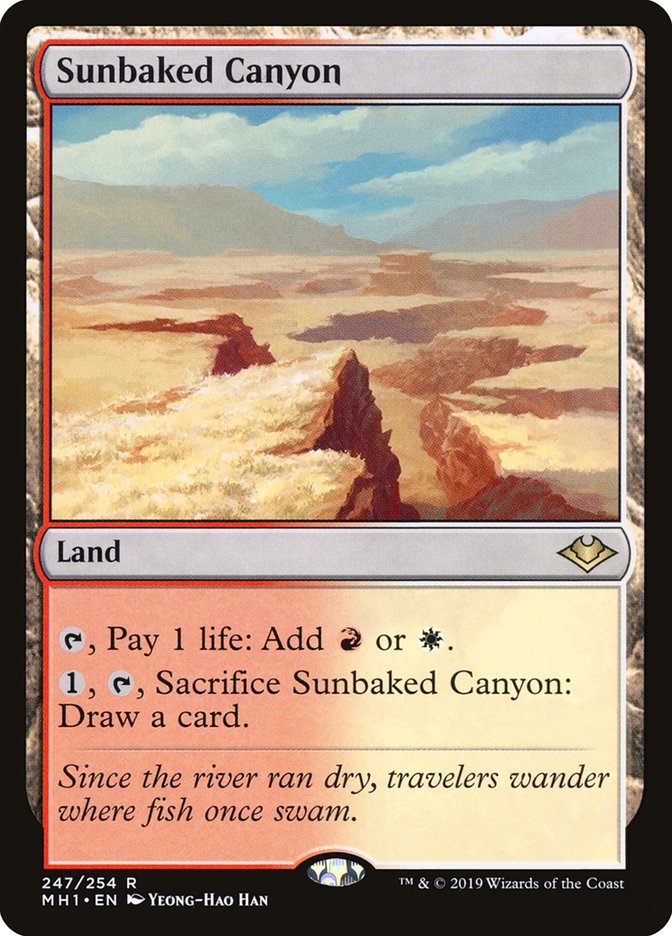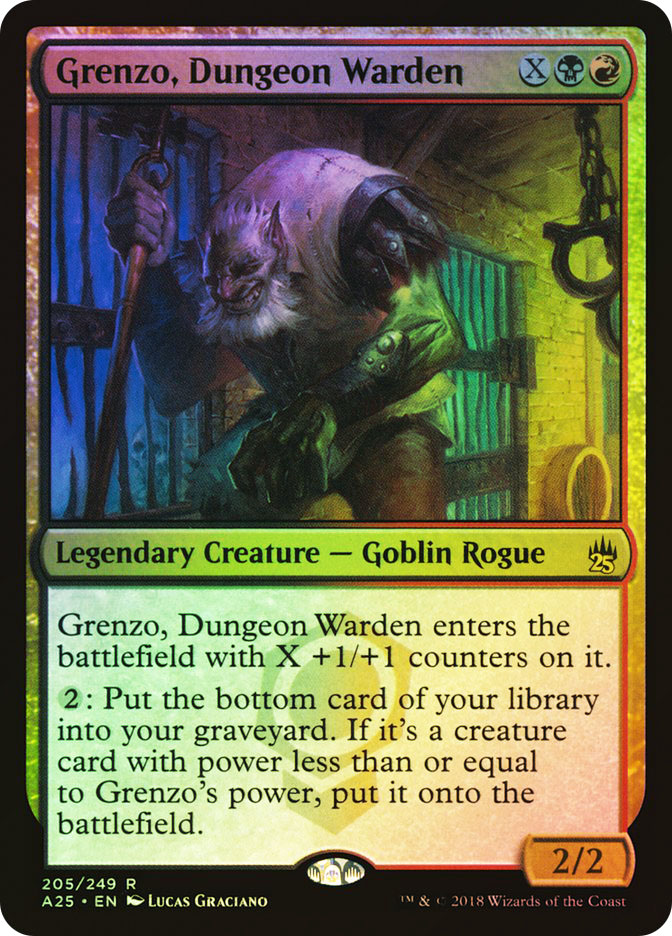It’s finally happening.
After years of speculation and rumors about a potential Magic: The Gathering movie, our favorite card game is finally coming to cinemas—er, well, TV sets—near you. And as someone who spent the better part of a decade working in the TV industry, I can say with a high degree of confidence that the thing is really going to happen this time.
And friends, it’s going to be a really big deal.
Considering the success of the Avengers franchise, Joe and Anthony Russo are among the highest-profile producers working in Hollywood right now. Getting them to produce the Magic TV show is a major coup. They could not have been cheap to hire, and Netflix is going to promote the heck out of anything they’re attached to. Plus, since we’re talking about Netflix instead of a broadcast network, we don’t have to worry about the show not getting picked up from pilot or being left off the fall schedule. The entire first season will show up one day, and it’ll sink or swim on its own.
And if the show swims? Well, according to The Hollywood Reporter’s piece on the show, “Sources say the big-picture goal for Netflix and Hasbro-owned Wizards of the Coast will be to expand the series into a larger franchise featuring multiple series—a la the streamer’s former Marvel suite of since-canceled shows.” Even though this is kind of a no-duh sentiment—of course the goal is to turn Magic into the MCU!—it’s still exciting to hear. Can you even imagine a world where Magic: The Gathering becomes a crossover media phenomenon a la the Marvel universe or Game of Thrones?
Since this is a Magic Finance column, I thought it would be useful to examine the potential impact of Magic: The Gathering as a potential mega-brand. What effects might the TV show becoming a hit have on the card game? More importantly, what sorts of things should you buy now as a way to plan for a future where the brand is growing in leaps and bounds? Let’s talk.
The Waiting Game
Before we get into the tasty juice at the center of this article, I feel like it’s important to establish a timeline for determining when the Netflix show might actually drop. I’ve already heard some people talking about the show as if it’s going to premiere at some point this year, but there’s no way that’s going to happen no matter how much money Netflix and Hasbro throw at it.
Animation takes a very long time to produce. When you’re making a live action TV show, you can get from script to finished episode in about a month if things are really humming along. Comedies can be done on an even zippier timeline, especially three-camera comedies (the ones with live studio audiences), which can go from script to final cut in about a week and a half.
The turnaround for animation is far longer. With the notable exception of South Park, most animated shows are written about a year before their scheduled air dates and it takes a full six months to produce them. This is a why animated shows often get multi-year pick-ups, like when Rick and Morty was given a 70-episode order from Adult Swim. It’s also why we haven’t seen any episodes from that order yet, despite the fact that it happened more than a year ago.
We can actually go back into the history of Netflix’s other animated shows and make a pretty decent guess as to when the Magic: The Gathering show might arrive. Matt Groening’s Disenchantment was announced on July 25th, 2017 and premiered on August 17th, 2018. She-Ra was announced on December 13th, 2017, and it premiered on November 13th, 2018. Tuca and Bertie was announced on February 20th, 2018, and it premiered on May 30th, 2019.
It feels safe to assume that Magic is going to be on the longer side of the development curve. There’s no voice cast yet, for example, and things always take longer when high-profile producers like the Russos are involved. I suppose there’s a shot that everything is fast-tracked and we see Magic drop next May, but it’s far more likely that we’re looking at late summer or early autumn of 2020 release.
Even if the show lights the world afire right away, it might still be a while before Magic becomes a multi-series franchise. Netflix is probably going to wait for those first seasons ratings figures to come in before ordering another season or two, so the earliest we’ll get that is sometime in mid-2021. The show would have to do really well for them to start creating spinoff shows, so we’re probably looking at 2022 for those at the very earliest.
So yeah. This is all very exciting, but don’t expect anything to happen right away.
Will the TV Show Actually Make People Want to Play the Game?
Yes. Next question.
Okay, the more nuanced take here is probably more like, “Yes, as long as the show is good,” but I’m going to go ahead and assume that it at least will be solid. The Russos are involved, most of Netflix’s high-profile original shows are pretty good, Magic has a great story, and they’ve hired a slate of other talented writers to fill out their staff. If the show fails, I’ll be surprised.
So far, it has been clear that more people getting involved with Magic in any form is a rising tide that lifts all boats. When Duels of the Planeswalkers was released on Xbox and PC back in 2011, it boosted FNM attendance by quite a bit. The same thing happened this year, with Arena also working to boost interest in the tabletop game. The more space Magic occupies in the popular culture, the more people come to play the game in all of its forms.
A better analogy for the potential of the Netflix show might be Pokémon Go, which created a massive surge in demand for all things Pokémon back in the summer of 2016. During those heady few weeks that we all spent catching digital Pidgeys and Rattatas on our phones, old Pokémon cards surged in price on the secondary market as folks were reminded of just how much they loved those wacky monsters from their childhood.
The cross-media analogies don’t have to stop there, either. To the surprise of absolutely nobody, the MCU has had an absolutely massive impact on the price of old Marvel comic books. The key issues of Captain America and Iron Man have always been wildly expensive, but the movies have continued to push those prices into the stratosphere.
The movies have also caused some issues to become key even when they were fairly undesirable before. Rocket Raccoon has never been a major character in the comics, so you could find the issue with his first appearance for about a dollar for many years. Now? That thing is worth $100+. Check out this article if you want to know more about that market—I highly recommend it.
But let’s get back to Magic. If we assume that the show is going to lead to a surge of new and returning players engaging with the game, which aspects of Magic are likely to be the most appealing to them? In other words, what things should we buy before the TV show comes out in hopes of making a profit after its release?
Let’s go through our options one at a time.
Hasbro Stock
If Magic really is going to become some Marvel-esque property, then why not just buy a bunch of Hasbro stock instead of Magic cards? After all, it’s far easier to buy and sell stock than individual cards. Plus, it gives you a piece of the actual action instead of fighting over the scraps.
The problem with this line of thinking is two-fold. First, Hasbro is a lot more than just Magic. They’re the third-largest toy company in the world in terms of revenue, and the largest in terms of stock value. They don’t just own Magic, they own My Little Pony, Nerf, Monopoly, the Transformers, GI Joe, and even the noble Furby. It’s possible that the Magic TV show will make Hasbro a ton of money—in fact, the announcement caused Hasbro’s stock price to jump from $97 up to $102 last week—but the future of the Transformers franchise is arguably even more important to the company than anything having to do with Magic. You just don’t know what other factors are at play here, or what else will happen between now and summer 2020.
Also, Magic cards have proven themselves more recession-proof than stocks. When the general economy tanks—which some economists predict will happen soon—all the major corporate stocks will tank along with it. Magic cards? Probably not. Singles prices weren’t really affected by the 2008 crash, since people in a recession tend to prefer tangible investments like collectables to more ephemeral investments like stocks and bonds. Granted, the overall Magic market was a lot lower in 2008 than it is now, but an economic downturn won’t automatically spell doom and gloom for your card collection. It will for your stock portfolio.
If you are going to buy Hasbro stock, I’d at least hold off until the Magic TV show has a trailer and a firm release date. That way, you’re minimizing your exposure to other risks in the interim. You don’t have to worry about a potential Furby bubble or whatever, and you’ll still be able to reap the rewards if the TV show has a successful launch.
Standard Staples
Buying into Standard ahead of the Magic TV show is another reasonable idea that’s impossible to act on until early 2020. Ixalan block, Dominaria, and Core Set 2019 will be long gone by the time the TV show arrives, and the three Ravnica sets will have either just rotated or will be only a couple of months away from fading into the sunset. Even if the Netflix show drops in July, I can’t imagine it will cause a flurry of demand for cards that will be rotating out of the format in early October.
The other problem with buying into Standard is that Arena will almost certainly be the entry point for a lot of folks who come in via the TV show, many of whom aren’t ever going to cross over to the paper game. While the show will likely cause tabletop Standard demand to rise, much like Arena did, I still wouldn’t invest in the only competitive Constructed format that you can actually play on Arena right now. If Standard prices do go up, the gains are unlikely to be huge.
If you still want to buy into Standard ahead of the TV show, I recommend focusing on whatever sets release in Fall 2019 and Winter 2020. If we assume that there’s going to be a surge of new players in Summer or Fall 2020, then there are going to be a lot more of those staples floating around due to an increase in the number of folks drafting and cracking boxes. That’ll make the cards from earlier sets more scarce in comparison, causing them to see an increase in price.
Modern Staples
Now we’re getting somewhere. Not only can’t you play Modern on Arena, but it doesn’t take much of an increase in Modern demand to cause an increase in prices. The relationship between demand and prices isn’t always linear, and it’s possible that, say, a 25% increase in the Modern player-base could cause a temporary surge in prices of 50% or more. The new TV show could mean big things for the Modern market.
There are still some major hurdles standing between us and profit, though. For one, Modern prices are tied pretty tightly to the format’s metagame trends, and I really don’t want to be buying into too many cards that are only expensive because they see a lot of play right now. Remember: a year ago, Mardu Pyromancer and Hollow One were top-tier decks. Trying to predict which of today’s elite decks are still going to be relevant in twelve to fourteen months is incredibly difficult.
I also doubt that too many people are going to make the jump from “Oh, there’s a Magic TV show now!” to “Hello, yes, please give me one thousand dollars of your finest Modern staples” in a matter of weeks, or even in a matter of months. Modern is the sort of format that only starts to get become attractive once you’ve been in the game for a while and you either want to start playing unfair brews or building decks that don’t rotate. I assume that some people will go from watching the TV show to playing Modern, but it’s going to take a while for that trend to play out and pay off.
It’s also very unclear how Modern reprints are going to work over the next twelve to fourteen months. When WotC put the Masters sets on temporary hiatus, they were pretty adamant about trying to reassure us that they would still be reprinting Modern cards in some form or another. This isn’t something I’m worrying too much about in general when it comes to Modern speculation, but it does make trying to figure out what the market is going to look like a year from now slightly more difficult.
Ultimately, I feel like Modern Horizons cards represent the best Modern buys to focus on this year for a variety of reasons. They’re not going to be reprinted soon, we’re entering a buyer’s market for them, and even normal trends in the world of Modern should have them starting to tick up in price as soon as the first quarter of 2020. If the Netflix show creates any additional buzz for Modern, it can only help speed the increase for Modern Horizons cards. And if not, they’ll go up in price anyway.
Commander Staples
Spoiler alert: Commander is likely the tabletop format that will benefit most from the TV show. Some people are going to go from Netflix to Arena, or even straight to Standard at their local FNM, but many others will look up a way to get into the game casually and are going to stumble directly into the waiting arms of Commander.
The issue with pre-Netflix Commander speculation is finding something actionable. Assuming we agree that the overall Commander index is going to rise once the TV show releases, what cards should we target in the meantime?
It’s probably not a good idea to go too deep into anything Commander-related until after the Commander 2019 decklists are released in a couple of weeks, but EDHREC is the best place to go for ideas when it’s time. They have a rundown of the most popular Commander staples of the past two years, and there are quite a few key cards that have been released in recent sets.
For example, Eternal Witness and Demonic Tutor were in Ultimate Masters, making it unlikely that they’ll be reprinted again at any point over the next couple of months. Chromatic Lantern has been on the rise again, and it’ll easily be back in the $15 range by the time the TV show hits. Gilded Lotus is another card I love right now, for many of these same reasons. Gilded Lotus has been $10+ several times during its history, but its recent printing in Dominaria has it down at $4. That will change.
That said, I don’t think the TV show will fundamentally change the Commander marketplace; the cards that were good investments before the show will still be good investments afterward. What I expect to happen is that the timeline for expected gains will be significantly shortened due to an increase in demand. For example, if it would normally take a couple of years for a card like Gilded Lotus to double in price, additional demand caused by the Netflix show could lead to those gains happening in a matter of months instead. Because of this, you should prioritize holding onto Commander specs more than you otherwise would over the next year or so.
Reserved List Staples
At first glance, it seems like Reserved List staples might be the best investment to make before the TV show drops. After all, this is the closest thing we have in the Magic collector-verse to key issues of Silver Age comic books, right?
This is somewhat true, but it’s worth noting that the kinds of Reserved List cards likely to appeal to fans of the Netflix show are going to be different from the kinds of Reserved List cards that appeal to long-time Magic players. This is similar to how long-time readers of Marvel comics have different priorities from fans of the films who are getting into comics for the first time.
For example, I can’t imagine a card like Underground Sea having a lot of appeal to someone who hasn’t been playing Magic for the past decade. Why would it? It’s just a land, and even if you remember it being great back in your schoolyard days, there are lots of other, nearly-as-good dual lands in the game now. A card like The Tabernacle at Pendrell Vale would likely generate a similar reaction: unless you’re planning on building Legacy Lands or you have a deep understanding of the game’s complex financial history, the card is just head-scratchingly expensive.
If you’re looking for cards that might be Magic’s version of key Iron Man and Captain America back issues, it’s important to focus on cards that are going to feel iconic to everybody. For example, Black Lotus and the Moxen are about as close as Magic gets to Captain America #1, and I wouldn’t be shocked if those cards see another major spike after the Netflix show premieres. Ditto for other iconic Alpha and Beta cards like Shivan Dragon, Serra Angel, and Hypnotic Specter. These are cards that appeal more to collectors than players, but that’s the sort of audience that the show is likely to bring in, at least at first.
Main Characters
Let’s end this journey by taking a slightly different look at how we think about Magic and Magic collecting.
No matter how much effort WotC R&D puts into the integration of Magic’s story with its game mechanics, most players still use the game’s flavor as more of a jumping-off point than a way to engage with the pre-scripted narrative. We like building Sliver decks or Nicol Bolas decks or whatever, but we’re generally not trying to re-enact specific story beats or narrative elements when we bring those decks to FNM.
What if the Netflix show changes this?
For example, we know that Chandra Nalaar has been featured on the one piece of promotional material we’ve seen so far. She might not even end up in the show, of course—we don’t know anything about what the story’s going to be—but I’d be shocked if the key Gatewatch folks aren’t involved one way or another. That means Chandra, Nissa, Liliana, and Jace at the very least, depending on where in continuity the show takes place.
So what happens once a surge of new players want to build decks that show off their favorite moments from the TV show? What “key issue” cards would they want?
Right now, copies of Chandra Nalaar from Lorwyn sell for $2.50. Foil copies are twelve bucks. From a gameplay perspective, this makes sense—Chandra Nalaar isn’t one of the better versions of Chandra, and the card has been reprinted half-a-dozen times regardless. If you want a copy of Chandra, it isn’t hard to get.
But what if people start treating these early planeswalkers as a collectible instead of just as a game piece? There’s precedent for this in Magic already—Alpha copies of Shivan Dragon have a book value of $6,000, compared to just half a dollar for the 10th Edition version. This is an extreme example, but Shivan Dragon and Chandra Nalaar are both equally underpowered in all casual and competitive formats. The early versions of Shivan are only worth what they are because they’re vanishingly rare and incredibly iconic.
Why can’t this logic apply to the Lorwyn Five as well, albeit on a smaller scale? Much like how the Marvel comic where Rocket Raccoon made his first appearance jumped from $1 to $100 once Guardians of the Galaxy hit theaters, these iconic early versions of Magic’s protagonists could finally see their day in the sun as collectables. “The first appearance of Chandra” has a nice ring to it, doesn’t it? And it’s not like there are a ton of Lorwyn cards floating around out there anyway.
It’ll be interesting to see if this way of thinking begins to affect other old Magic cards as well. For example, the issue of Hawkeye where the cover depicts him shooting Ant-Man on one of his arrows saw a massive increase in value once people realized that there was an homage to that cover in Captain America: Civil War. The Magic TV show is obviously not going to be as big a cultural deal as the Marvel films no matter how well it does, but what if a minor character from some weird old card ends up being a breakout character? You’d better believe we’ll see some price spikes because of that.
Ultimately, I have to believe that these purchases are ultimately going to be the most successful and lucrative. I’d start stocking up on Lorwyn planeswalkers now, and I’d also keep a close eye on who the main characters in the TV show are going to end up being. They’re going to fully cast the show before they order any of the animation (when you’re producing an animated TV show or film, sound and dialog are always recorded first) so we’ll have a good sense of which other characters might be worth our investment long before the show hits Netflix.
Other than that, I’d pay extra attention to Commander staples and Modern Horizons cards over the next year or so. I’d also look to make whatever long-term, high-end purchases you’re interested in adding to your collection at some point before next summer. This TV show is going to increase demand for Magic all across the casual and competitive spectrum, and you should prepare for that as best you can.
This Week’s Trends
Amazingly, War of the Spark Standard looks to be shaping up into a pretty great environment. Mono-Red Aggro is still the dominant deck in terms of popularity on Arena and Magic Online, and it might still be the best overall deck, but there are loads of other top-tier decks to choose from. Ben Friedman took down Grand Prix Kansas City with Esper Superheroes, a deck that runs a full eight (!) Teferis. Then you have all manner of Command the Dreadhorde decks, which are also full of planeswalkers. There are also Bant Mass Manipulation, Izzet Phoenix, Gruul Aggro, and many more. While Sam Black isn’t yet calling this the best Standard format of all time, I do agree with him that it is one of the most diverse Standard formats of all time at the very top of the metagame. Give it a shot if you’ve been sitting on the sidelines.
Financially, there hasn’t been a lot of movement in Standard recently. With so many different decks to choose from and Mono-Red Aggro traditionally being one of the cheaper options to play, there simply haven’t been many price spikes as of late. That said, I’d still like to highlight the fact that we’re getting pretty close to the high supply mark for War of the Spark. Core Set 2020 previews are going to start in a week or two—yes, really!—which means that it’s time to start thinking about buying whichever War of the Spark cards you think you’re going to need over the next year or so. At the very least, I’d snag a set of Teferi, Time Raveler ASAP. If any Standard-legal non-mythic can end up being a stable $25+ card, it’s this one.
Interestingly enough, the biggest “Standard” gainer of the week was Crucible of Worlds, which surged all the way up to $33 this week. The card is still technically Standard-legal, though it’s almost exclusively a casual and Eternal card. I don’t think Crucible is going to continue shooting up in price, but I strongly suspect it’ll remain at or above the $30 range from now until it’s reprinted again. It’s about as safe a hold as it gets.
Speaking of gainers, let’s talk about Modern Horizons. So far, Seasoned Pyromancer is the only mythic that’s seen a meaningful increase in price since my set review. Here’s hoping you read that piece and took action, because I’ve been pretty high on the card since the start. I predicted that the price would double once it broke out in my review, and I’m sticking with that take. If the early testing results hold up, we’re looking at a $30-$35 card.
Over in the non-mythic rare camp, Hogaak, Arisen Necropolis jumped from $3 to $8 on Friday due to the emergence of a new Hogaak Bridgevine deck. The decklists are still a bit all over the place right now, but most of the lists use some combination of Bloodghast, Vengevine, Gravecrawler, Bridge from Below, and Hogaak. None of the deck’s non-Hogaak pieces have spiked as of this writing, but I strongly suspect that by the time you read this article on Monday morning all of them will have jumped in price. I can’t really evaluate whether buying in at the new price will be good or bad without seeing where they end up, but my guess is that all of these cards will see at least a 50% increase that’ll persist for as long as folks want to try out the deck.
On the other side of the ledger, a lot of Modern Horizons cards are dropping hard now that packs are finding their way to shelves. Among the biggest losers so far are Sword of Truth and Justice; Sword of Sinew and Steel; Yawgmoth, Thran Physician; Echo of Eons; Unbound Flourishing; Mox Tantalite; and Tectonic Reformation. I didn’t really love those cards to begin with, and I’m not surprised that they’re all dropping.
What does surprise me is that the Horizon lands are dropping in price as well. These cards are going to be sought-after and expensive for a while, so I’d start monitoring their prices closely. It might behoove us all to buy in earlier than expected—say, in a week or two—before people realize just how much of an impact they’re going to have. It’s worth keeping an eye on at any rate, and I wouldn’t be surprised if the Modern Horizons pendulum is currently swinging too far in the other direction. Most of these cards started off being overvalued, but we’re pretty close to a place where they’re all being undervalued.
The Netflix show might have been the biggest announcement of the week, but there were two other major pieces of Magic news as well. First, it looks like the US is finally getting better-quality card stock, beginning with the next print run of War of the Spark. Here’s hoping it’s the same card stock they get in Europe, which is far better than ours. I don’t think the difference will be enough to cause price differences between the print runs, but better card stock is good for the longevity of our collections going forward.
Second, the London Mulligan is coming to all formats—permanently—starting with Core Set 2020. I don’t think there will be too many spikes due to this, since cards like Serum Powder and Leyline of the Void spiked back when the new mulligan rules were first announced, but it is worth noting that this might change the balance of power a little in formats like Vintage, Legacy, and even Commander.
Foil copies of Grenzo, Dungeon Warden have already spiked a bit, since he lets Commander players mess with the bottom of their library after a mulligan, and I wouldn’t be surprised if he becomes one of the hot new Commanders as people try to find ways to use and abuse the London Mulligan rules. This also puts Ancient Stirrings and/or the Urzatron lands closer to the banned list than they’ve ever been before, though I feel like Mycosynth Lattice is in a slightly more precarious position at the moment in terms of future legality.
Lastly, a word on Japanese War of the Spark boxes. I’ve had a lot of people asking me on social media whether they’re worth the buy right now or not, and unless you’re planning to hoard them sealed (I suspect they’ll be worth a ton in the future) I’d strongly suggest that you simply buy the Japanese planeswalkers that you want as singles instead. Finding these boxes for less than $170-$180 is a chore right now, and the current expected value is a lot less than that. Your odds of opening a foil alt-art Liliana or Narset just aren’t that high. If you really want those cards, just go buy them. Playing the lottery doesn’t make sense right now.


